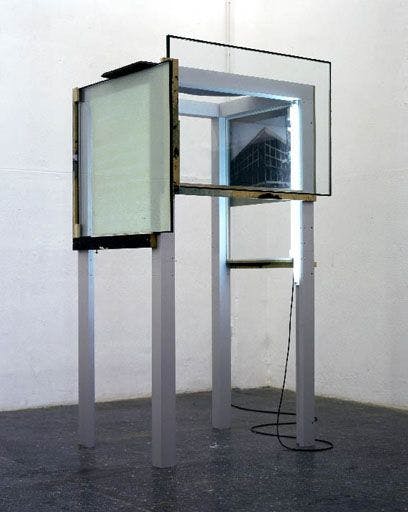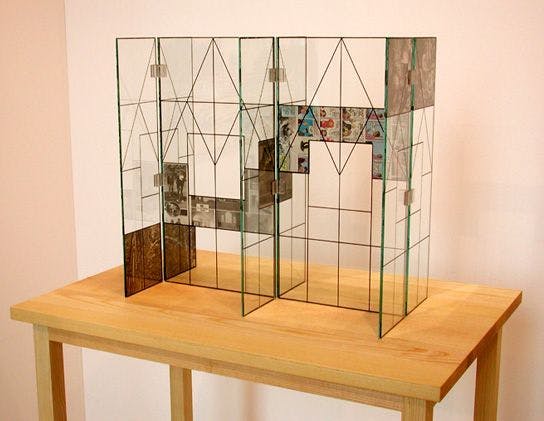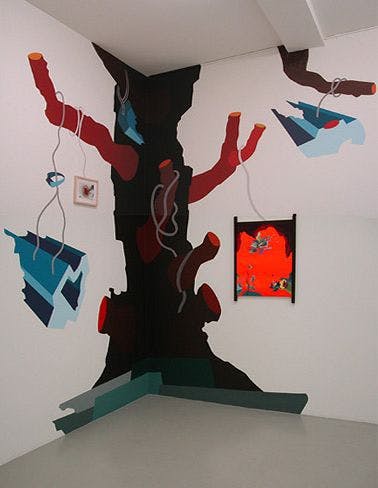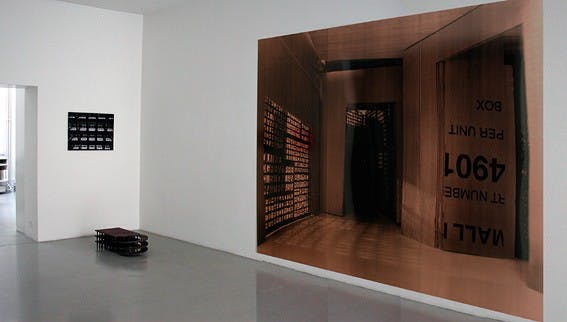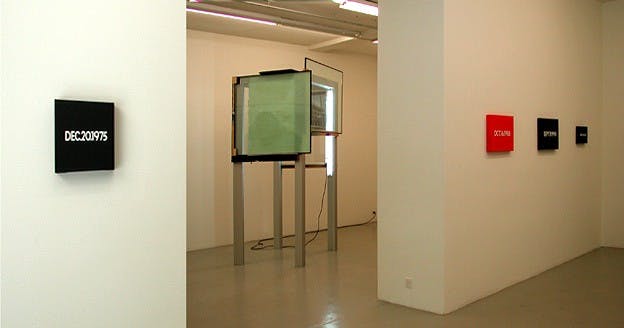ZURICH
Close By – Time Space Architecture
Group Exhibition
Jun 13 through Jul 31, 2004
- Prev
- Next






Taking up Siegfried Giedions’s programmatic study of 1938/39, “Space, Time, and Architecture. The Growth of a New Tradition”, there has been a succession of exhibitions in the last few years that have examined the relationship between space, time and architecture, most recently the large survey exhibition, Rethinking Time, Space and Architecture that took place in Berlin in 2002 on the occasion of the 21st architecture congress.
Close by – time space architecture is on the other hand a more intimate undertaking. Led by personal preferences and interests, it brings together artistic positions that reflect the problematics of space, time and construction. Space and time as the constants of our orientation, essential for each vivid experience, come to fruition in various ways in the work exhibited here by artists originating from various cultural contexts and generations. The four Date Paintings by On Kawara are, for example, from four decades of creativity as well as being a store for time and memory. In recording it as it were in painting, the works that vary only in their format and colour represent one day. By means of the never-changing painterly experience they remove it from the flow of time and thus endow it with permanence. In his photographs Hiroshi Sugimoto makes significant examples of recent architectural history appear as visual mementoes for the observer. In their programmatic lack of focus they float between fleetingness and extremely formal conciseness. In contrast, precisely because of their almost unrealistic focus, the digitally manipulated photographs of the Tugendhat House in Brünn by Thomas Ruff have a model-like character.
In her video Berlin Zoo Filipa César experiments with the influence of the power of the imagination on our perception, combining the space-time experience of two different places. In screenprints produced from large-format copper plates Cristina Iglesias deals with imaginary architectural spaces that recall triptychs. Functioning like an artist’s tool, Franz Ackermann’s Mental Maps operate on the boundary between reality and imagination. A wall work shown in the exhibition condenses the artist’s travel experiences by translating and fictionalising the fact of global networking and interconnections in an aesthetic of its own. Rita McBride’s artistic thought process investigates the borders between sculpture, architecture and design. Without any trace of sentimentality, time in McBride’s work acquires a fundamental role as the meeting point of form and meaning. In Pedro Cabrita Reis’ sculptural installation the photographic portrayal of a building appears as a medium of memory. Favorite Places No. 6 works with transparency and opacity, the gestures of revealing and concealing,
comparing the memory of an architectural space with the immediate aesthetic experience. With Matt Mullican’s City Chart with Pictures, that in its transparency and fragility withdraws from the viewer’s consumption, the utopian need for a thorough cosmological ordering of reality finally appears, in which the flow of time as well as experiences of contingency are cancelled. [Text: Iris Wien]
